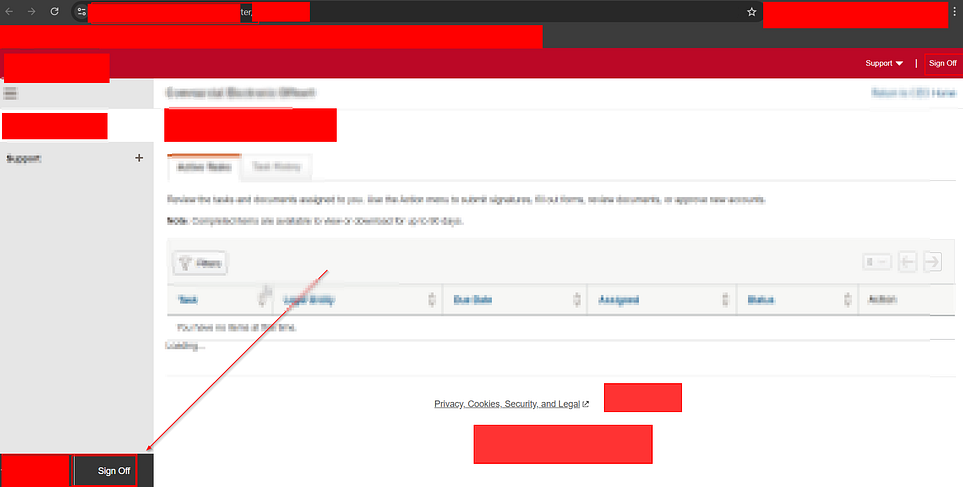Javascript analysis for Bug Bounty: 3 Step Guide to Find Critical Web Vulnerabilities
By Satyam Pawale (@hackersatty)
About Me
JavaScript analysis is one of the most effective skills in modern bug bounty hunting, and it’s a big part of what I do. I’m Satyam Pawale, widely recognized in the cybersecurity community as @hackersatty. As a passionate bug bounty hunter, I specialize in discovering hidden and high-impact web vulnerabilities through advanced recon techniques, especially by analyzing overlooked JavaScript files.
My goal is to help the community level up their security skills by sharing real-world experiences. In this article, I’ll guide you through how I uncovered a critical vulnerability on a live subdomain using JavaScript recon, endpoint discovery, and misconfiguration exploitation.
Whether you’re just starting out in the world of bug bounty hunting or looking to sharpen your methodology, you’ll find actionable techniques here that you can apply right away. I believe in persistence, smart recon, and giving back to the community. Let’s dive deep into web application security and unlock the next critical bug together.
Why JavaScript Analysis Is a Bug Bounty Goldmine
JavaScript Analysis is a powerful method for uncovering hidden vulnerabilities during bug bounty hunting. I’m Satyam Pawale, known as @hackersatty in the bug bounty community. Through advanced JS file inspection, I discovered a critical security flaw in a subdomain—without needing login access. Whether you’re a beginner or experienced hunter, this guide will teach you how to perform actionable JavaScript reconnaissance that uncovers high-impact vulnerabilities.
- Broken access controls
- Sensitive data exposure
- Unauthorized functionality
This write-up reveals the step-by-step process I used to find a critical vulnerability on the subdomain test.redacted.com. Combining tools and techniques, I uncovered serious web security flaws.
Step 1: Harvesting JavaScript Files for Hidden Gems
The first step is to collect JavaScript files from the target website. These files often reveal hidden endpoints and features that aren’t visible on the main site.
Tools I Use:
-
curl: For downloading JavaScript files quickly.
-
LinkFinder: To extract URLs and endpoints embedded inside JavaScript code.
-
dirsearch: To enumerate directories and discover unlinked JavaScript files under paths like
/static/js/and/resources/.
This process helped me discover critical paths like:
-
/training/Course/Catalog -
/training/Course/VerifyCourses -
/doccenter/
By carefully analyzing these files, I gained insights into hidden application features and possible attack vectors.
Step 2: Probing Endpoints for Web Security Flaws
After gathering endpoints, I tested them for vulnerabilities.
GET Requests
Accessing URLs such as:
-
https://test.redacted.com/training/Course/Catalog -
https://test.redacted.com/doccenter/
These returned HTTP 200 responses and exposed sensitive data without authentication. Surprisingly, some endpoints meant to redirect to login pages instead exposed admin-level functionality—a classic bug bounty goldmine.

POST Requests
Endpoints like /training/Course/VerifyCourses accepted POST requests with crafted JSON payloads, allowing me to:
-
Modify training course data without authorization.
-
Access internal content, bypassing security checks.
Parameter Exploration
Appending query parameters such as ?id= or ?file= to /doccenter/ exposed private internal documentation due to lack of access controls—a common and serious vulnerability.
Step 3: Expanding the Attack Surface with Directory Enumeration
Using dirsearch, I discovered additional critical paths:
-
/js/api/: More JavaScript files with hidden endpoints. -
/private/admin/: Admin-level endpoints exposed without authentication.
This expanded the attack surface and revealed further opportunities for exploitation and bug bounty rewards.
Suggested additions:
- Link to OWASP page for vulnerabilities:
- Owasp
-
Link to official LinkFinder repo:
Linkfinder
Why These Vulnerabilities Matter
Broken Access Control
The root cause was broken authentication and authorization, enabling:
-
Unauthorized access to private resources.
-
Execution of admin-level operations.
-
Exposure of sensitive internal documentation.
Real-World Impact
Attackers could exploit these flaws to:
-
Manipulate internal training systems.
-
Steal or alter sensitive data.
-
Compromise the integrity of confidential documents.
For bug bounty hunters, these are high-severity issues that translate to significant rewards.
My Bug Bounty Journey: A Snapshot
-
Day 1: Collected and analyzed JavaScript files.
-
Day 2: Tested endpoints to confirm vulnerabilities.
-
Day 3: Used directory enumeration to uncover more paths.
This structured approach proves how persistence and technique unlock critical web security flaws.
Want to explore more real-world bug bounty techniques? Check Out My Other Bug Bounty Blogs
Key Takeaways for Bug Bounty Hunters
Advanced JavaScript security analysis combined with tools like curl, LinkFinder, and dirsearch uncovers hidden endpoints, misconfigurations, and sensitive data exposure. Mastering these techniques is essential for succeeding in bug bounty programs.
Join the Bug Bounty Community
Ready to level up your bug bounty skills? Connect with me, Satyam Pawale (@hackersatty), to discuss advanced techniques and share insights. Drop a comment below or reach out through my contact page to join the conversation!
Stay Ahead in Web Security
I regularly share detailed bug bounty write-ups and web security tips to help the community grow. Explore my other reports and follow me for the latest vulnerability hunting techniques. If you found this guide helpful, please share it with your network to spread the knowledge.
Happy hunting, and may you uncover the next big vulnerability! 🚀

One thought on “Javascript analysis for Bug Bounty: 3 Step Guide to Find Critical Web Vulnerabilities”